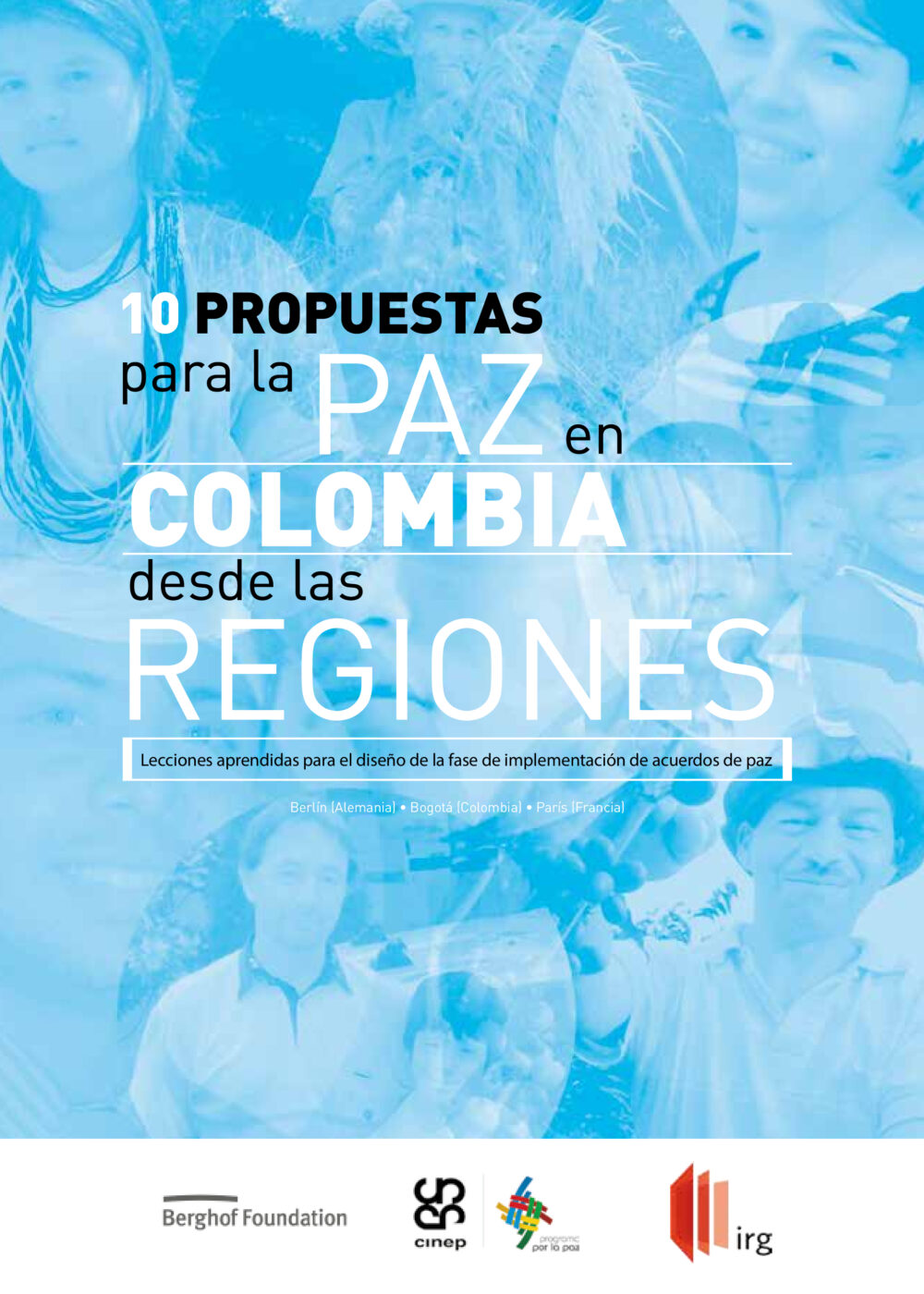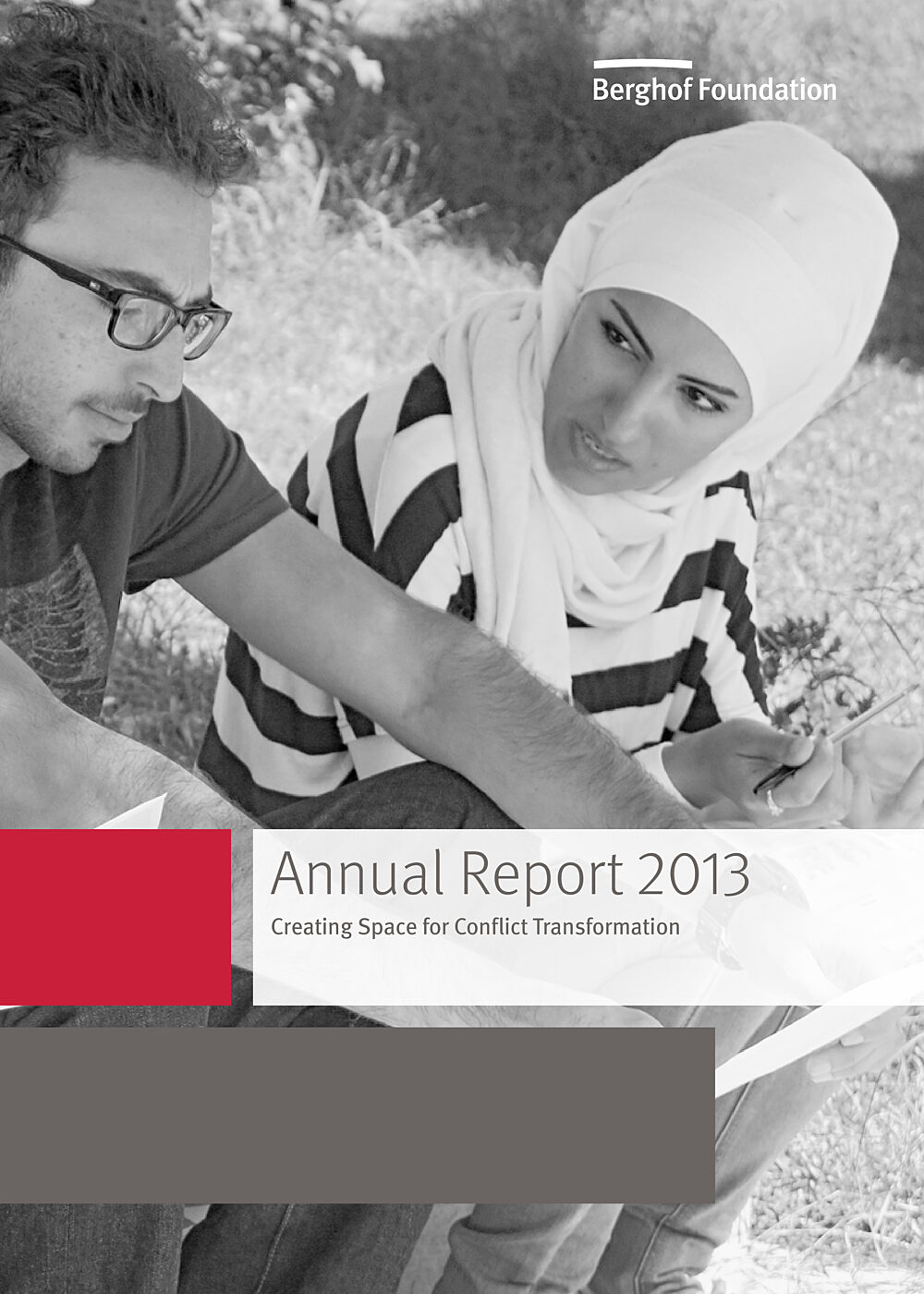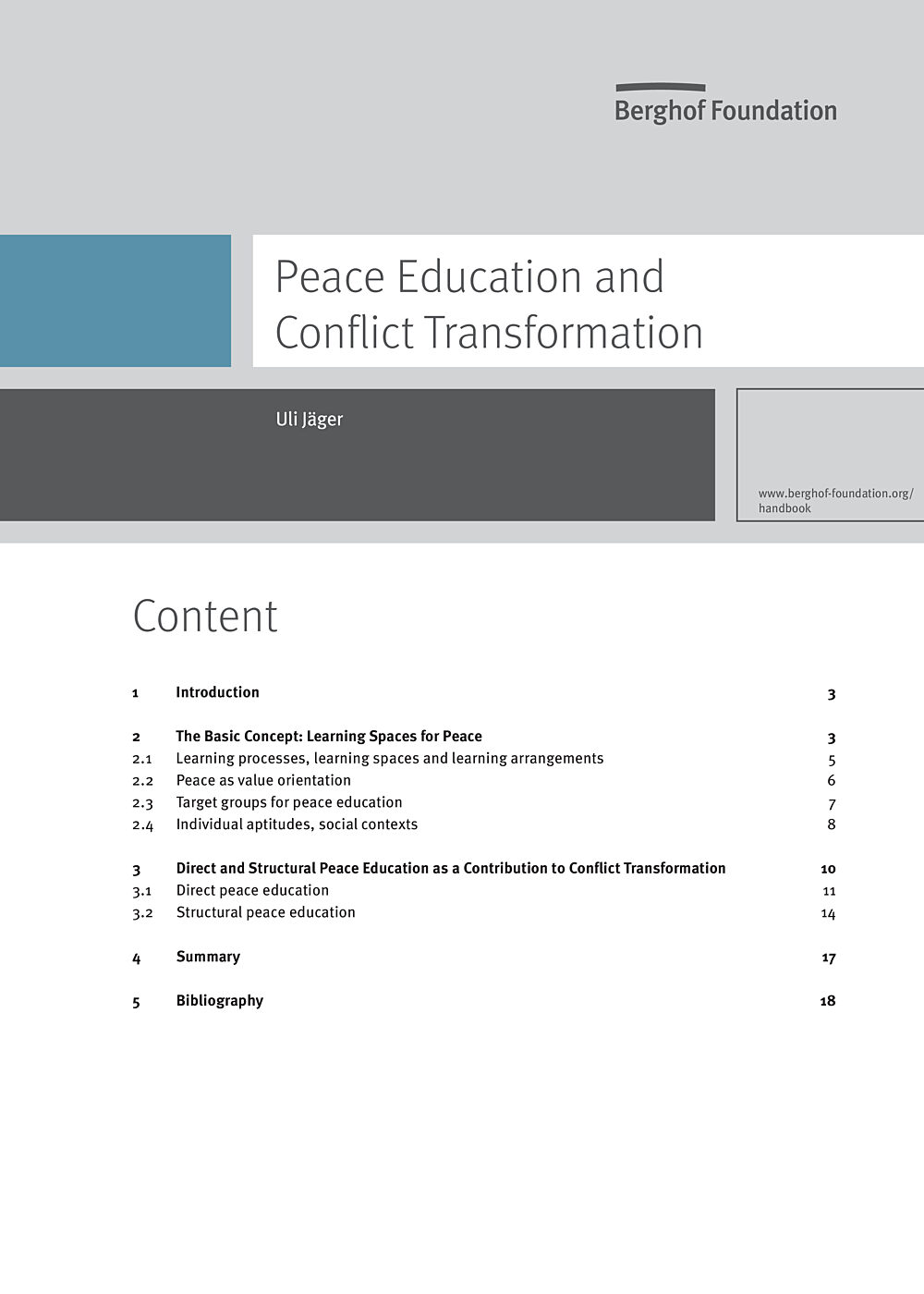Our Library
Explore our publications, from research papers and series to educational materials, covering all aspects of conflict transformation and peace promotion.

Diez Propuestas para la paz en Colombia desde la regiones
- Year2014
- Author(s)Barbara Unger, Claire Launay-Gama, Mauricio García Durán

Reflexionar - Concertar - ActuarBases conceptuales y herramientas para la asesoría en procesos de Construcción de Paz
Esta caja de herramientas ha sido desarrollada pensando en el trabajo de organizaciones, instituciones y personas que acompañan y asesoran procesos de cambio en contextos conflictivos, que tienen como finalidad contribuir a la Construcción de Paz.
- Year2014
- Author(s)Johanna Willems, Uta Giebel, Barbara Unger, Jaime Andrés Gómez

Berghof Foundation Annual Report 2013
- Year2014
- Author(s)Berghof Foundation

Peace Infrastructure in Colombia
Colombia has a broad array of institutions tasked with different functions that support peace-building. Drawing on the concept of Infrastructure for Peace, the Berghof paper “Peace Infrastructure in Colombia” written by Silke Pfeiffer in early 2014 provides a mapping of the different Colombian entities and analyses their potential contribution for Colombia’s current peace process.
- Year2014
- Author(s)Silke Pfeiffer

Infraestructura de Paz en Colombia
Colombia cuenta con una amplia gama de instituciones con funciones relacionadas a la construcción de paz. A base del concepto de infraestructura para la paz, este estudio Berghof “Infraestructura de Paz en Colombia”, elaborado a inicios 2014 por Silke Pfeiffer presenta un mapeo de las diferentes entidades Colombianas y analiza su potencial para el actual proceso de paz de Colombia.
- Year2014
- Author(s)Silke Pfeiffer

Peace Education and Conflict TransformationHandbook Article
Develops a basic concept of internationally oriented, context-related and process-oriented peace education with clearly defined target groups. Against this background, the author presents a comprehensive and practical approach to peace education in crisis and conflict regions, the aim being to promote conflict transformation. In this context, a fundamental distinction is made between direct peace education (encounter, inspiration, training) and structural peace education (pilot projects, curricula, implementation). The context-related interaction between these two basic forms is identified as a promising approach and offered up for discussion. Brief case studies from the practice of peace education are presented for the purpose of illustration.
- Year2014
- Author(s)Uli Jäger

Friedenspädagogik und KonflikttransformationHandbook Article
Entwickelt ein Grundverständnis von international ausgerichteter, kontextbezogener und prozessorientierter Friedenspädagogik mit klar definierten Zielgruppen. Vor diesem Hintergrund wird ein umfassender und praxisorientierter Ansatz für Friedenspädagogik in Krisen- und Kriegsregionen präsentiert, der die Transformation von Konflikten fördern will. Dabei wird grundlegend zwischen unmittelbarer Friedenspädagogik (Begegnung, Inspiration, Qualifizierung) und strukturbezogener Friedenspädagogik (Modellprojekte, Curricula, Implementierung) unterschieden. Das kontextbezogene Zusammenspiel dieser beiden Grundformen wird als ein erfolgversprechender Ansatz zur Diskussion gestellt. Fallbeispiele aus der Praxis der Friedenspädagogik verdeutlichen die Überlegungen.
- Year2014
- Author(s)Uli Jäger

Supporting Negotiations for Peace in AfghanistanPolicy brief No. 4
- Year2014
- Author(s)Janel B. Galvanek

Between a Rock and a Hard Place: Nepal’s Road Ahead After the Second Constituent Assembly ElectionsPolicy brief No. 3
This brief examines the impact of the second Constituent Assembly elections on Nepal’s peace and conflict context. Considered narrowly through a democratisation lens the elections can be hailed a success. However, if one unpacks the larger processes surrounding the event a more nuanced picture emerges. This brief argues that Nepal’s peace process has moved from simplicity to complexity; a reality that is reflected in, but not accommodated by, the electoral process. The brief presents a range of options to address this discrepancy.
- Year2014
- Author(s)Marike Blunck

“Living Freedom” – The Evolution of the Kurdish Conflict in Turkey and the Efforts to Resolve ItTransitions Series No. 11
The unresolved ‘Kurdish question’ is closely tied to the interests of global powers, and as such is as much the problem of England, the United States (US) and the European Union (EU) as of Turkey, Iran, Iraq, Syria and the region. In short, the Kurdish question is an international problem.
Because Kurds have always lived under the sway of others, they have had difficulty establishing the internal dynamics and motivation required for self-administration. The result has been a lack of societal unity and religious ideologies that sometimes conflict with one another – which explains the Kurdish people’s vicious cycle of dividedness, external reliance, inner conflict and subdivision into even smaller pieces.
- Year2014
- Author(s)Adem Uzun